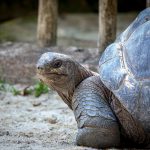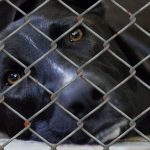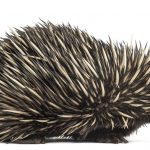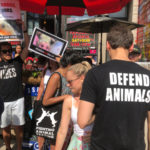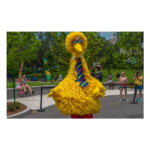The History of Stealing Farm Animals in Australia
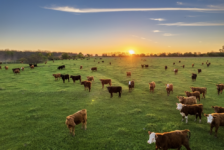
Apollo, the mythological ancient Greek God of almost everything, including prophecy, healing, diseases and with ‘Stopping Evil’, was a ‘Rustler’.
Goats, sheep and pigs were the animals predominantly farmed in ancient Greece; however, cattle according to mythological history, were ‘Rustled’ by the ‘Gods’, including Apollo, also known as the God of the SUN.
Ironically, Apollo was also regarded as the ‘Patron God’ of ‘Herdsmen and Graziers’.
The ‘Cattle of the Sun’ were used as ‘Sacrifices’ and eaten; but also became a significant source of monetary value in financial circles.
This crime is committed in all Australian States and Territories and throughout the world, resulting, in not only the loss of hundreds of millions of dollars annually, but livelihoods and at times, even Lives.
Cows, in some instances, can fetch up to $2,000, with Bulls, up to $10,000. It certainly is a profitable business, albeit illegal.
Australia’s new livestock
One can only imagine what Australia’s native kangaroos, wallabies, koalas, and dingoes must have thought when the ‘First Fleet’ landed in Sydney, in 1788.
Once the 1500 seafarers, which included convicts, soldiers and sailors disembarked, they were followed by 4 cows, 32 pigs, 44 sheep, 19 goats, 6 horses, 5 rabbits and 87 chickens.
Of course, once the luscious grazing land was observed, arrangements were made for thousands of such animals to be sent to Australia.
‘Meat and Livestock Australia’ reported that the farming of such animals contributed $17.6 billion to the Australian Gross Domestic Product (GDP).
Livestock numbers
Australia’s cattle, alone, numbers approximately 25 million, with sheep reaching over 64 million, about 5 million pigs and over 2.5 million goats.
Australia also has approximately 400,000 feral horses, 200 million rabbits and in the region of upwards of 600 million chickens (with a very short life span)
Quite an increase from the year 1788.
Natural disasters which livestock farmers face
Whilst there are some multinational farming conglomerates, many farms are family-owned businesses, both employing family members and providing for society.
Droughts, floods and bushfires are the natural enemy of all farmers, including livestock owners; as indeed are rustlers.
Bushfires
From the bushfires of 1851 (Black Thursday), where 12 people perished and 1 million sheep and many thousands of cattle died, to those of 2019/2020 (Black Summer); where, according to the World-Wide Fund for Nature and the World Economic Forum, 3 billion animals died, or were displaced, bushfires have become a matter of grave concern to livestock owners.
Bushfires, along with floods and droughts, are a regular occurrence in Australia and throughout ‘farmland’ globally.
During Black Summer, 34 people lost their lives (25 in New South Wales) and in excess of 3000 homes were destroyed; with approximately 1% of all Agricultural Land in Australia, badly damaged.
World heritage icons decimates
New South Wales Blue Mountains World Heritage Area and Queensland’s Gondwana World Heritage Rainforests suffered damage to 80% & 53% respectively, during the Black Summer Bushfires.
Then in 2022 came the floods, but mainly in New South Wales and Southeastern Queensland; whilst at the same time, other States were experiencing droughts.
This disaster was given the name Eastern Australia Floods.
It brought with it, devastation:
- 22 people died.
- Property damage was estimated by the Australian Insurance Council as fast approaching $4.8 billion.
- Brisbane Central Business District was flooded, as were 177 suburbs, leaving 23,000 homes seriously damaged.
- The Australian Army was called in to assist.
Sydney suburbs had to be evacuated as several rivers were at danger of overflowing.
Rustling history
The next ‘Disaster’ faced by livestock farmers’ is what is known in Australia as ‘Duffing’, but more colloquially known throughout the world as ‘rustling’.
This is the criminal offence of stealing the products which feeds and houses many farming community families and provides food for society in general.
July 2020 saw New South Wales farmers lose $2,500,000 through the theft of 10,000 head of stock, with NSW Police stating this type of crime is under reported.
As of August 2022, the loss had increased to $8,500,000 worth of cattle over the previous two years.
Relaunch of Operation Stock Check
Seeing an increase in rustling, New South Wales relaunched an initiative called ‘Operation Stock Check’.
The state’s Police Force Rural Crime Prevention Team, whose numbers were increased to 63 specialised investigators, run this initiative; with sweeping powers to enable them to stop and search vehicles transporting livestock.
Livestock theft has risen across all of Australia and a company called Integrity Systems Company (ISC) has joined forces to assist the community.
This company essentially ensures that the red meat industry is complying with all health rules and procedures. It is a wholly owned subsidiary of ‘Meat and Livestock Australia’.
Livestock theft on the rise due to the global hardship of the cost of living, is a common theme now being heard from around the world.
In a June 2021 article, the Financial Review reports that 28,400 Australian livestock are stolen annually, out of a total national figure of approximately 25.2 million animals.
How do we stop this?
At a Beef Australia conference, a new technological solution was presented to the audience; 80% of whom, it is estimated had been the victim of such farm crime.
It is a technology which uses low orbiting satellites for tracking when an animal is on the move.
Australia has a glamorous view of ancient rustlers; however, the story is told, it still left the devastation of someone’s lost livelihood and in some cases, someone’s life.
Captain Starlight, aka Henry ‘Harry’ Readford, who in 1870 rustled 1000 head of cattle from Queensland and took them to South Australia, where he sold them.
A New South Welshman, he got his nickname, as he was adept at navigating the cattle by the stars, taught to him by Aboriginals.
Global trade in rustling
A Research Paper by the Council for the Development of Social Research in Africa in 2019 provides cogent evidence that RUSTLING is big business.
It is a global multi-billion dollar enterprise, involved in financing Terrorism and Rogue States.
The United Nations Office on Drugs and Crime (UNODC) specify how RUSTLING has become an integral arm of Transnational organised crime where the sums of money involved in RUSTLING see the trafficking in a variety of weapons, drugs and people, including frequent episodes of mass murder.
The United Nations Security Council see rustling as a matter of concern, providing briefings on the issue to Member States.
ENACT are integral to combating the major threat of cattle rustling predominantly in African nations, where it is now seen as a major threat as part of Transnational Organised Crime.
ENACT, who work with Interpol and the Institute for Security Studies are currently engaged in studies, which have identified politicians bribing rural communities to join cattle rustling networks; in what has been declared a multi-billion dollar enterprise in Africa alone.
Enhancing Africa’s Ability to Counter Transnational Crime is what ENACT stands for. They are funded by the European Union and also work with the Global Initiative, which is comprised of,“a network of 500 independent global experts working on human rights, democracy and governance” to combat organised crime.
Banks
This disaster is more of a ‘Man-Made’ one, but no less disastrous!
With farmers finances depleted by the bushfires, droughts, floods, rustling and in many cases, homes, equipment, motor vehicles and outbuildings being destroyed; came the ‘Coup de Grace’ (The final blow).
Whilst some banks remain loyal to their farming customers, many others choose loyalty to their shareholders and have been, according to reputable ‘Economic Experts’, ‘Inflexible’, in relation to some foreclosures on loans.
It must be said however, that April last year saw the first of planned regular meetings between the National Farmers Federation and the Australian Banking Association; including Australian State & Territories farming unions, with a view to rectifying the previous ‘Inflexible’ state of affairs.
The legacy
Despite Governments in many countries providing ‘Farm Subsidies’ to assist in ‘Bushfire, Flood & Drought Recovery’; Farming is one of the global industries, with the most ‘Economic Uncertainty’, due to, predominantly, ‘Planet Earth’s Weather’.
Indeed, Australia’s Banking Royal Commission of 2019, recommended ‘Responsible Lending Laws’ be introduced for farmers, including a ‘National Farm Debt Mediation Scheme’ to be enacted by Parliament.
This was supported by the ‘Superannuation and Services Industry’.
In February 2021, after analyses by the Consumer Action Law Centre, it was reported that only 27 of 76 of the ‘Royal Commission’s Recommendations’ had been implemented.
Now, stronger protections for farmers and agricultural loans, has been implemented within the ‘Banking Code’.
With no end in sight
Suicide Rates, according to numerous ‘Research Articles’, including the World Health Organisation (WHO), International Journal of Community Medicine and Public Health (IJCMPH), Centre for Rural and Remote Mental Health, Social Psychiatry and Psychiatric Epidemiology Journal agree that; whilst numbers vary and are difficult to calculate, ‘Elevated Suicide Rates’ among farmers in many countries, continue to occur.
3144 Australians committed suicide in 2021
The National Rural Health Alliance, based on a forensic study over 10 years found that one farmer commits suicide every 10 days.
It is not too difficult to consider that, in addition to actual suicides, experts concur that there are also significant aspects of Mental Health illnesses suffered by farmers.
Health professionals have long accepted that there have been times when it is clear that the death of a farmer may have been more than accidental.
It is time that this subject is picked up by those qualified to do so and encourage dialogue, not only in the farming community.
Whilst there are many caring organisations endeavouring to assist in suicide prevention, the upward trend tells us we are not doing enough collectively.
It is interesting that many studies conclude that it is not only ‘Owner-Farmers’ who experience such tragic circumstances; but also, ‘Farm Employees’.
Historical offences against rustling
Sections 72 to 76 of the superseded Criminal Law and Practice Statute 1864 defined cattle as all forms of livestock and not simply cows, bulls and heifers.
The maximum penalty for the offence was 10 years in prison.
This was relatively lenient compared with some other parts of the world, considering that in the ‘Wild West’ (North America and Canada’s Cowboys and Indians) of the 1800s considered rustling a hanging offence.
If the cattle were simply used for what was considered the ‘joyriding’ of the era, it could result in 1 year in prison, or a 20 British Pound fine.
The offence of stealing cattle, or killing cattle with the intention of stealing it
Stealing cattle, or killing cattle with intent to steal it, is currently an offence under section 126 of the Crimes Act 1900 (NSW) which carries a maximum penalty of 14 years in prison.
This is an extraordinarily heavy maximum penalty, which is reflective of the historical impact of the offence.
Indeed, it is more than double that of other stealing offences (larceny is the most common such offence and carries a 5 year maximum), more than the penalty for a multi-million dollar fraud offence (10 years) and the same as the penalty for sexual assault (previously known as ‘rape’).
To establish the offence of stealing cattle, or killing cattle with intent to steal it, the prosecution must prove that you either:
- You stole cattle, or
- You wilfully killed cattle with intent to steal its carcass, skin or any other part.
To ‘steal’ is to dishonestly take the property of another with the intention of permanently depriving the owner of it.
There must some physical movement of the cattle, and the intention to permanently deprive must be formed at the time of taking rather than at some later time.
‘Cattle’ includes a horse, mare, gelding, colt, foal, filly, ass, mule, bull, cow, ox, steer, heifer, calf, ram, ewe, sheep, lamb, pig, goat, deer, alpaca, llama, vicuna, camel, or dromedary, and every hybrid or cross thereof.
‘Wilful’ means intentional.
Defences to the charge include duress, as well as claim of right, which is where you genuinely believed you were legally entitled to the property.

